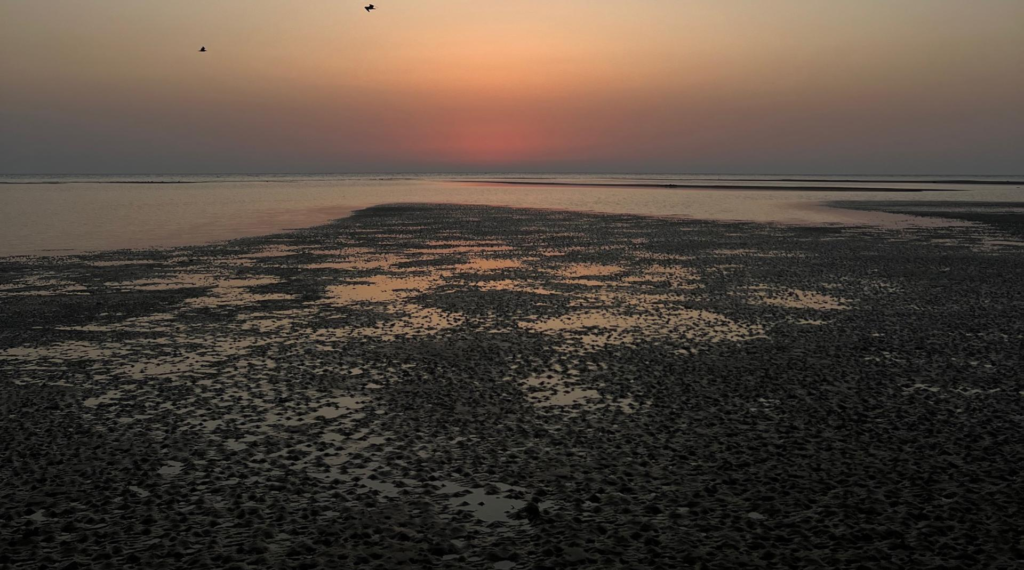Saudi Arabia’s Treasured Mudflats

Nestled along Saudi Arabia’s beautiful coastline and islands lies a remarkable ecosystem of mudflats. Found in shallow waters where the land meets the sea, mudflats are not mere patches of mud but thriving ecosystems, teeming with life.
They are home to an array of unique and resilient species, each adapted to the challenging and ever-changing conditions of the intertidal zone. As the tides ebb and flow, the mudflats transform from exposed surfaces to shallow water pools, creating a dynamic environment rich in biodiversity.
Mangroves, standing tall with their intricate root systems, are the guardians of many mudflats. As water passes through the mangrove’s mesh-like structured roots; sediments, organic matter, and pollutants are captured and held or sequestered in the tangled network. This natural filtration process improves the water quality within our beautiful Red Sea.
Mudflats also serve as a nursery for mangroves’ young, offering a haven for growth and development, and providing shelter for countless marine organisms.
Migratory birds, embarking on long and arduous journeys, find shelter in the mudflats, utilising them like motorway service stations. Bridled terns, Crab plovers, Flamingos and other important species observed in The Red Sea area rest and recharge in the wetlands and use the mudflats as a ‘buffet’.
But the mudflats’ enchantment does not end here. Mudflats are renowned for their role in carbon sequestration. As they capture and store organic carbon from various sources, they play a crucial role in mitigating climate change, acting as valuable ‘blue carbon’ sinks.
The vast expanse of mudflats silently works to reduce greenhouse gas concentrations, their significance extending beyond their immediate surroundings. They also act as a natural buffer, protecting coastlines from erosion caused by waves and tides. They help dissipate wave energy and stabilize shorelines, reducing the impact of storms and preventing land loss.
Local communities understood the value of mudflats and their role in supporting artisanal fisheries by providing breeding and feeding grounds for economically important bird and fish species. Mudflats also contribute to tourism, providing recreational activities such as birdwatching and fishing that help to attract visitors and indirectly generate revenue for local communities.
As the sun sets over the mudflats, casting a golden glow upon the shimmering waters, the interconnectedness of this coastal ecosystem becomes evident. These thriving ecosystems stand as a testament to the delicate balance between nature and human existence.
And so, the story of Saudi Arabia’s mudflats continues to unfold, weaving together tales of ecological resilience, biodiversity, carbon sequestration, shoreline protection and the harmonious coexistence of humans and nature. Mudflats serve as a reminder that, even in the vastness of the Arabian coastline, hidden treasures await those who take the time to explore and appreciate the beauty of the natural world.





 Email: info@cyber-gear.com
Email: info@cyber-gear.com